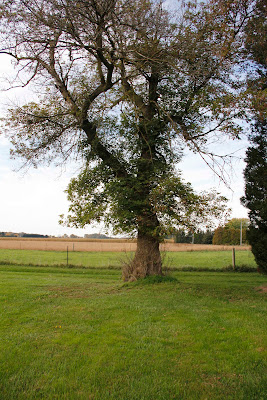In the second semester of my third year I decided to take Historical Process as one of my professional electives. I think it was a good choice since I have always been interested in old images and collecting them as well as learning how to restore and enhance them. Now I get to learn how to create them! It will be a long and arduous process but I'm ready! (I hope...)
The process that I've chosen to learn is called an Ivorytype. It is little known 19th century process that creates a delicate, hand-painted, positive image, which is affixed to glass. John E. Mayall is credited with having developed the process in London, England in the mid 1850’s.
The version created by Mayall consisted of an image exposed onto a piece of natural of imitation ivory using the albumen method. After exposure, the image was processed and the albumen coating was rubbed off while still wet. The remaining faded image was then gold toned to make it more visible and permanent. When dry, the image was coloured as a traditional ivory miniature figurine would have.
An American man named Mr. Wenderoth introduced another version of the Ivorytype in 1855. It is more common because it is simpler to produce and uses more readily available materials, such as paper as opposed to ivory. This process is created by superimposing a hand-tinted salted paper print onto an identical, more subdued print to add more depth, contrast. The images are then sealed to the backside of a piece of glass with pure white wax. Varying the thickness of glass, the distance between the image on glass and the identical image or the background can create varying fashions of this process.
Used in the making of Ivorytypes are salted paper prints. This process was the first type of photographic print made on paper and laid the groundwork for many of the printing-out processes that would follow. Invented by British photographer William Henry Fox Talbot, salted paper prints were first used to make his photogenic drawings and later in his process of Calotype printing.
Salted paper prints remained the preferred printing process from approximately 1839 to 1860 when they were superseded by the Albumen process. As mentioned, Talbot used this type of print in a process called Calotype printing in which he would make a negative print on paper and transfer onto salted paper to make a positive print. Salted paper prints are identified by their matte surface and subdued contrast. In these types of prints the image resides within the fibers of the paper not suspended on the surface in a gelatin or coating as in later processes.
Salted paper prints can be made from glass negatives, paper negatives like Talbot’s Calotype’s, or with today’s technology a film negative of digital negative. Positives made from paper negatives tended to produce somewhat grainy images but could be made clearer by applying wax to the negative. Glass negatives however produced a much crisper, sharper image. Salted paper prints generally have a subdued matte surface because the tones are embedded into the fibres of the paper, not suspended in a bonding agent.
The print is created by following these steps:
1. Coat the paper with ammonium chloride or sodium chloride (salt)
2. Leave the paper to dry fully
3. Under safelights, float the paper in a solution of silver nitrate
4. Expose the paper to a negative
5. Fix the print
6. Wash fix from the print
7. Dry
To produce and Ivorytype the finished salted paper print is then flattened and painted or coloured with pencils. Pure white wax is then heated and poured onto a plate of glass, which must also be heated. The print is then slowly lowered onto the plate starting from the middle, and pushing outwards towards the edges, making sure to dispel and air bubbles or ripples in the print. Then a sheet of clean white paper is placed behind the adhered print, which should be smooth and somewhat translucent. A duplicate of the photo can also be added behind to add more depth, contrast, and colour of needed.






































































